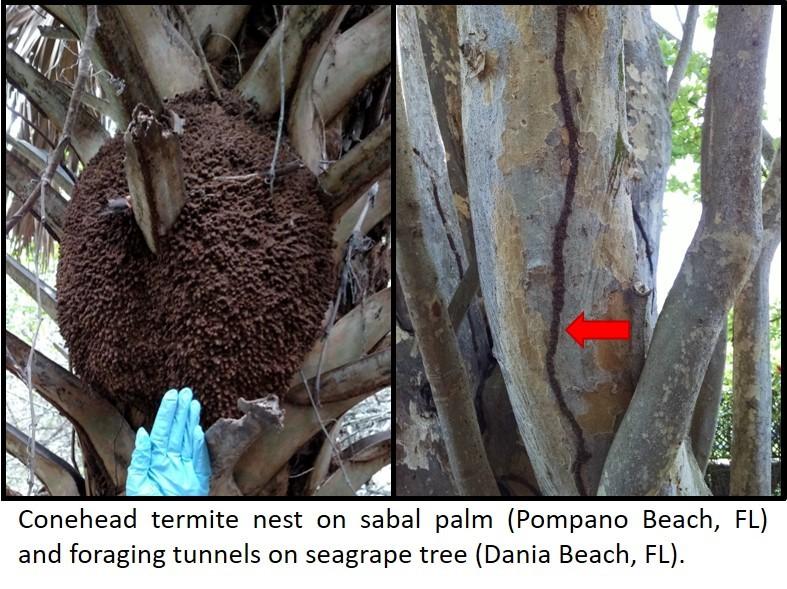
FDACS: Help Win the Battle Against Invasive Conehead Termites
November 25, 2019
By Katie Tenn, FDACS Conehead Termite Program Field Entomologist
Pests can cause all sorts of trouble to the environment, and as wood eaters, termites can damage homes, landscapes and agricultural crops alike. The conehead termite (Nasutitermes corniger) is a non-native species first discovered in Broward County in 2001. As an aggressive generalist feeder, conehead termites cause damage to trees, shrubs or any other cellulose-based material. As a top priority of Commissioner Nikki Fried to exterminate conehead termites, the Florida Department of Agriculture and Consumer Services (FDACS) is leading an eradication program to prevent them from spreading across the southeast metro area and out into Florida’s natural and agricultural regions.
The hard work and dedication of FDACS professional “conehead hunters” and entomologists, with assistance from local government, industry, and regional pest control operators, is paying off. Since their discovery, coneheads have been found infesting 120 properties across two South Florida cities; however, no live conehead termites have been seen since early 2019. We are well on our way towards controlling the known infestations – but we still need your help!

The conehead termite is an arboreal termite, which means they nest above ground, often on the base or trunk of trees, but also on the soil surface or tucked into debris piles. Given the nature of their nesting habits, conehead termites can easily be transported great distances by humans in landscape materials, nursery plants, and commercial or residential bulk waste. In fact, two known incidents of humans transporting conehead-infested material have occurred in Broward County. Only by continuing to search for unknown colonies and not-yet-discovered locations of this termite can we reach our eradication goals. The best way for this to happen is with everyone’s help.
There are three main conehead termite signs for which to watch in the field– tunnel networks, above-ground nests, and termite soldiers with a unique cone-shaped head. Termite tunnels look like hollow mud straws attached to trees, fences, houses, or any item between the termite’s nest and feeding location. While not the only termite to build tunnels, mature conehead colonies construct long branching tunnel networks -- often the first and most obvious sign of a conehead infestation. Even a single discovered tunnel is worth a closer look. Conehead nests are built of carton (a cardboard-like material) and are bumpy, brown and above ground-level. Nests are sometimes in plain view, but can also be tucked away and difficult to find. The last and most conclusive way to identify conehead termites is by locating the insects and the unique dark brown teardrop-shaped head of the soldiers. As the insects are only about the size of a grain of rice, they may be challenging to see, however, this is the only species of termite in the state of Florida which has this distinctive head shape.
The FDACS conehead eradication team is set to investigate all potential conehead termite infestations. Please contact us with any questions or suspected conehead termite sightings by visiting www.FDACS.gov and searching “conehead” or by contacting the FDACS Division of Plant Industry’s Helpline at 1-888-397-1517. Working together, we can win the battle to rid the U.S. of this dangerous invasive pest.
 2.png/)
 (2).png/)